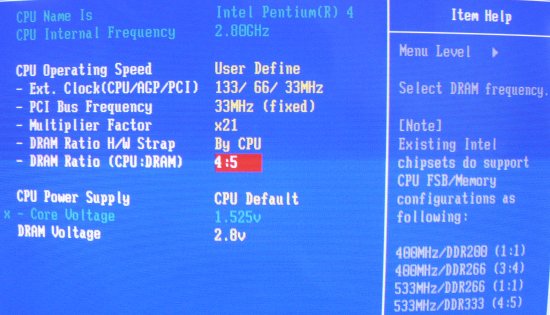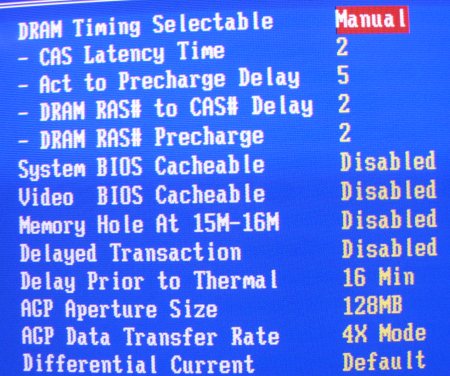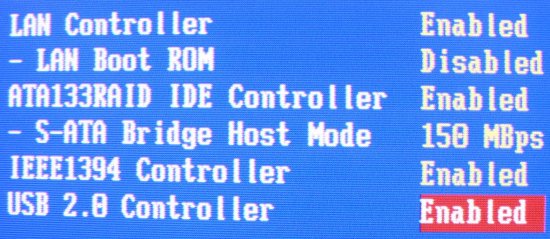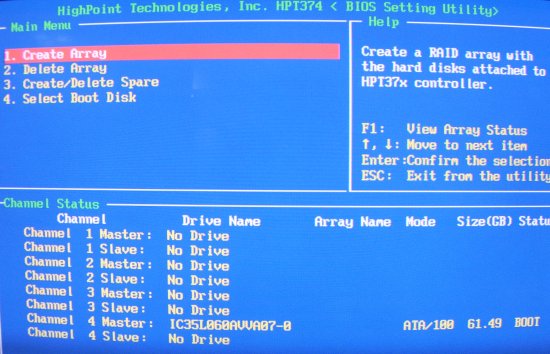BIOS
ABIT's Softmenu BIOS' are well-regarded in the motherboard industry due to their flexible and jumper-free options. Let's see how this one shapes up.
Here is the main configuration screen where the majority of tweaking takes place. Being geared towards the latest Intel i845PE chipset, we have support for each and every socket 478 processor. HyperThreading support, according to Intel's specifications, is present. We will not know exactly how HT will impact upon performance until we receive the 3.06GHz P4 in our labs. Our test 2.8GHz CPU has HT disabled.
The PCI and AGP busses are normally expressed as a ratio of the system FSB, such that they are always kept as close to their native 33MHz and 66MHz as possible. The system front-side-bus can be changed from 100FSB to 250FSB in 1MHz increments for total control. You can choose either set the AGP busses as a ratio of the system FSB, or have them fixed at either 33/66 , 37/75, or 44/88 Mhz irrespective of system FSB. I prefer to have it fixed to 33/66 for security. I can't really see the point of fixing them to 44/88 MHz, personally.
The i845PE also supports PC2700 memory directly via the 4:5 ratio highlighted above. Previous incarnations of the MAX series of motherboards saw only synchronous FSB:Memory support, although a little trick in BIOS allowed you to run memory at 1.33x CPU's FSB.
CPU voltage manipulation varies from 1.1v to 1.725v for all C1-stepping P4s (1.525v default) and 1.1v to 1.7v for all others. I find this to be a little conservative in a world where other manufacturers routinely specify 1.85v Vcore. Memory voltage can be manipulated from 2.5v to 2.8v.

System memory remains relatively tweakable with a CL option of 1.5 clocks, although that proved highly unstable in testing. The above shot shows the most aggressive timings that I could use during testing. There's no option of running RAM in 'enhanced' mode, though.

Some of the impressive features on offer. Thankfully, S-ATA-to-IDE works fine.

Here is the main configuration screen for the HPT374 4-channel RAID controller. Channels 1 and 2 are powered by the standard IDE RAID ports and channels 3 and 4 operate from the on-board SATA ports. You can see a 61.5GB IBM hard drive connected to a SATA port on the picture above.
It's a BIOS based on a successful design. It works well and is intuitively easy to use. I'm just a little perplexed as to why ABIT chose not to give end users a little more voltage manipulation.









